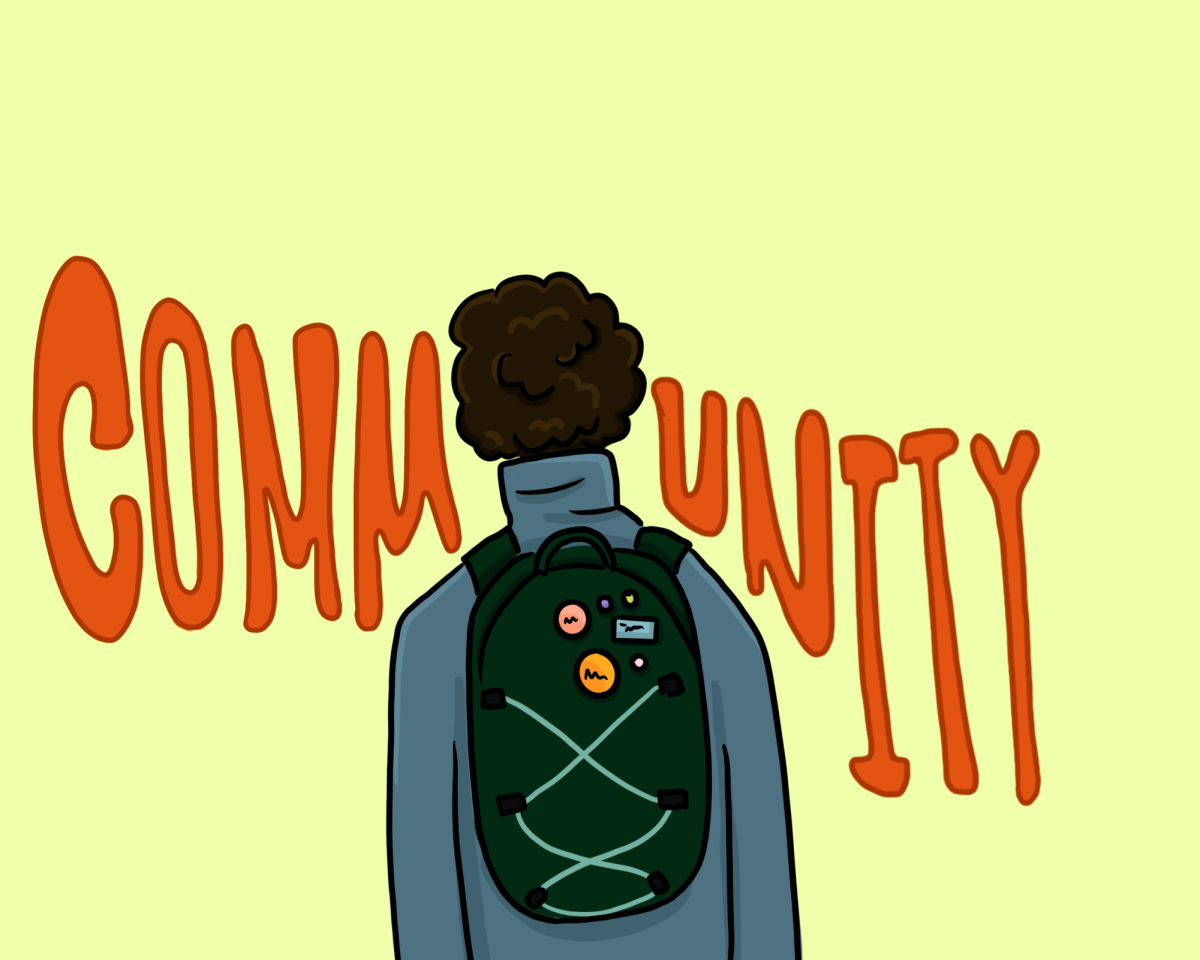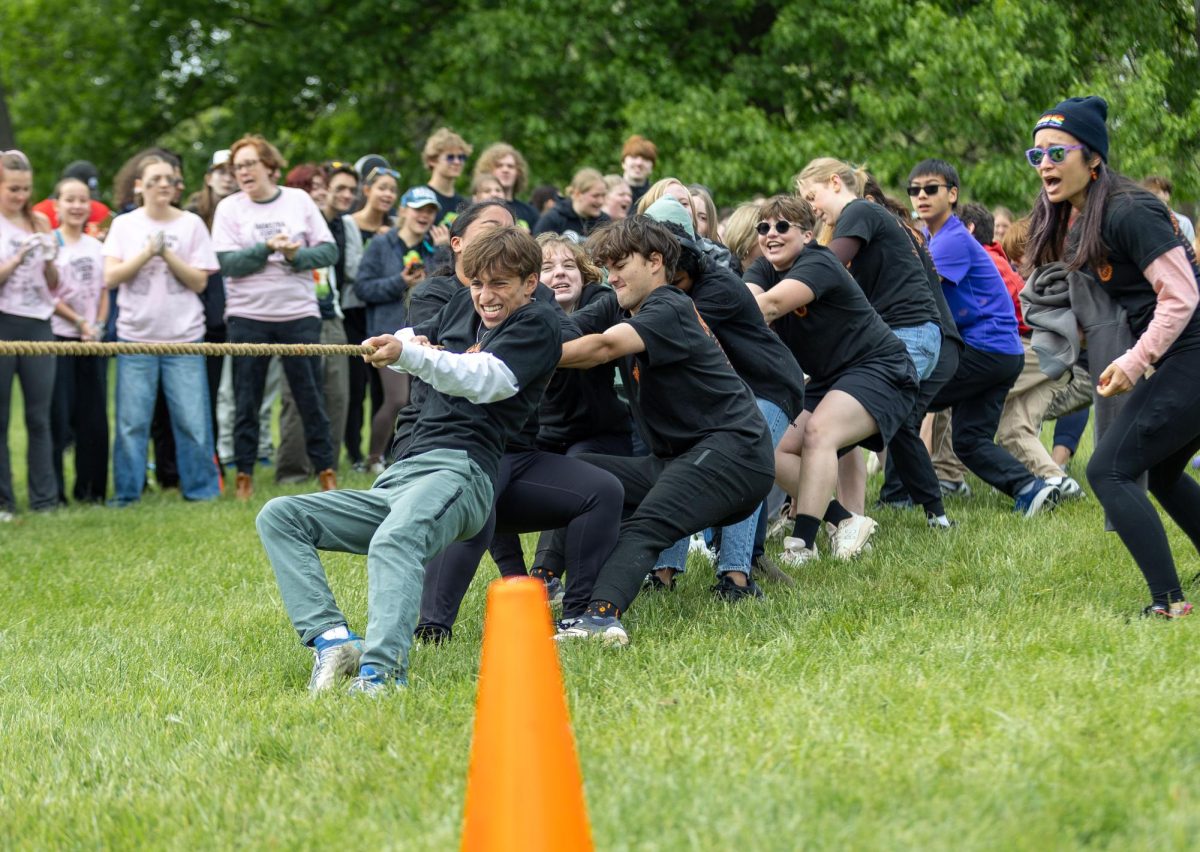Most classes at Community High School are not grade-specific. Students of all ages can be jumbled into Writer’s Workshop or Fantasy Literature together. With the exception of Introduction to Literature and the Foundations of Science program, students do not usually share a classroom only with others in their grade. But one class has developed a reputation for breaking that trend.
The majority of students in CHS Health classes this semester are seniors. The rest of the students are almost all juniors. With such a high number of upperclassmen, it would appear there was a deliberate plan to have Health classes specifically for seniors.
However, CHS Health teacher Robbie Stapleton recalls that this was not the case.
Approximately 15 years ago, Stapleton was a history teacher at CHS. To her memory, the required health class was taught by a part-time teacher and “By virtue of that, it became a senior class because it filled up in five or ten minutes during registration,” Stapleton explained. Students register for their semester classes in order of graduation year: seniors are the first to register.
Part of the adjustment for Stapleton was designing her newly assigned class to fit the students she would have. “I knew it was going to fill up with seniors because it was required class. So from the get-go I based a lot of the curriculum on a college-based curriculum,” Stapleton said.
Another aspect Stapleton considered when choosing to build her class on the college curriculum was the type of student she was teaching at CHS. Stapleton’s concern was how the majority of the class would relate to the high school curriculum. Due to the lack of relatable images in the textbook, where “those kids don’t look like our students,” Stapleton didn’t want the intended high school curriculum to ruin her connection to her students.
Previously students took health in combination with a nine week course in driver’s education. Looking back, Stapleton said, “I just don’t recall Health being a major presence in the building.” Stapleton believes a state mandate led the district to take driver’s ed out of the public high schools. Health classes would now become semester long classes. “And that’s when I started teaching it,” said Stapleton.
After returning from maternity leave, Stapleton was approached by Community’s dean at the time, Dean Judy Conger, about teaching Health at CHS. For a year, Stapleton balanced History and Health. After the previous Physical Education teacher left, another switch occurred. Stapleton swapped History for the newly available PE classes and continued teaching Health. Along with acquiring new classes to teach, Stapleton witnessed a change in the age of students signing up for her Health class. The newly formed Health class was also a graduation requirement.
“I knew that my credibility would be diminished from the get-go, and when you’re teaching a subject like Health the one thing you have to have is credibility,” she said.
At the other public high schools in Ann Arbor, health classes are based on the high school curriculum, and the majority of students in the class are 10th graders. Stapleton believes the content taught in their classes is generally like the content of Community’s health class. “I think we have similar focus,” Stapleton commented.
The format of how the information is presented to CHS students compared to the other high schools is where the contrast between the college and high school text shows. “Here’s the big difference, I think. When we study health, I’m always going at theory first…We’re reading the people who have made movement in the field. That’s more college-like. To study them, and to study what they’re doing. I think [what is] more high school is a much more…sort of personal approach. Like doing collages of, you know, your personality. I think there’s a huge place for that. I think it’s wonderful. I don’t have anything bad to say…but when kids are seniors, I don’t think that meets them where they’re at. And I just have a real healthy respect for who people are when they’re 17 or 18. They’re adults. You know, most kids don’t want to make a collage of their life at that point. And I think at tenth grade, that may be different.”
The college-level content is intended for Stapleton’s senior-heavy classes. But when the rare sophomores do take the class, they rise to the occasion. “The ones that I’ve had are every bit as capable and mature as the older kids and in some ways more. They sort of have to be,” said Stapleton. Since Stapleton considers all of the classes at Community to be rigorous, she doesn’t wish to single her health class out. However, she added, “Because I teach seniors, I really believe I can expect them to act virtually like college students.”
Layla Khorsheed, a CHS sophomore currently taking Stapleton’s Health class, is content with her choice. Although she was unaware the class would be upperclassmen, Khorsheed finds her age to be an advantage while taking the class. “I think it’s actually better to take it at my age because now like, I’m younger so I know the facts before I experience them more. Because it’s not just after high school when you go through all these things that the class gives information on,” said Khorsheed.
In contrast, Carly Paull-Baird, a CHS senior, is a rarity in her almost all sophomore health class at Pioneer High School. Her teacher, Stapleton’s admired colleague Jan Baublis, has made Paull-Baird’s experience enjoyable, and allowed the class to have a somewhat more mature context. “I think Ms. Baublis, my teacher, does a really good job of not sugar-coating stuff for younger kids,” said Paull-Baird.
Paull-Baird also suggested that sophomore year may be a better time to take high school health than senior year. “I think that senior year is a little late for some of the subjects and the content of the class. Not late in the sense that it would change what we do or what choices we make, but I think that a lot of the stuff she’s talking about is stuff that, as a senior, people have come across already. Whether that’s good or bad, I think that as a sophomore it makes sense to be talking about stuff maybe before you come across it.”
Pioneer sophomore Amy Burdick is a classmate of Paull-Baird, and also finds the class engaging. “I actually really look forward to going to that class. I think it’s really interesting,” said Burdick of the health class. Burdick believes the class is relevant to underclassmen, as it takes topics depicted in the media and gives them explanation.“I think that everything we are talking about are things that are commonly exposed to in classmates and in media. A lot of stuff we learn about is portrayed in the media, so I think that we’re definitely already aware of it. And so I think this is just a really good guideline for it to be expanded upon so we can actually know the real meaning and the real facts about it,” she said.
In an effort to combat the lack of health class for underclassmen at Commuity, Stapleton originally started “Tuned In” to fill that void. In 2004, Stapleton created the student performance troupe, which looked at “bad” behaviors such as drinking and smoking, which are prone to start at an earlier age. “I started ‘Tuned In’ in order to shore up and provide access to that information to younger students,” said Stapleton.
At the time, “Tuned In” held their show for incoming freshmen at the Neutral Zone with discussion following the show. The show was mandatory for freshmen, although that aspect was never an issue. The graduating class of 2010/2011 was the last group to see a “Tuned In” show in that form. “Tuned In” ended up being too time consuming for Stapleton, and therefore the show ended for freshmen. Of the experience, Stapleton said, “It was a ton of work, but I thought was good for the freshmen. It was bonding for the freshman, and it exposed them to content they won’t get until they’re seniors. And that sucks. I would love to teach mini-units, in a reworked curriculum, mini-units to freshmen or sophomores as they come in.”
The mini-units Stapleton is referring to could contain conversations about misconceptions freshmen have about Community. “I would love that to be the beginning of a social norming campaign
for freshmen,” said Stapleton.
There is another reason students at Community end up taking health as upperclassmen and don’t have a health class as underclassmen. Health classes at CHS have always been available to seniors first through registration. For students to have their Health requirements met as underclassmen, more Health classes would need to be offered each semester. The amount of classes offered each semester is determined by the Full Time Equivalent (FTE) put towards a specific subject. FTE refers to the number of classes a teacher can teach. Each class taught counts as .2 FTE for a teacher. Full time teachers cannot teach more than 1 FTE worth of classes.
The FTE available for health classes at CHS have never been conducive to offering more classes each semester. For juniors and sophomores to take Health in equal numbers with seniors, there would need to be two Personal Fitness, two PE, and two Health classes per semester. In that case, Health classes would probably see mostly 10th graders taking the class. With the lack of FTE available, Stapleton does not have the option to offer a health class for underclassmen as well. Stapleton finds it unfair that students don’t have the opportunity to take health as an underclassmen. However, through her years of teaching the class, Stapleton has developed a theory about high school health. “Here’s what I think I know. The freshmen and sophomores really need this content; the seniors are more receptive to it,” said Stapleton.
Although the current trend of seniors in Health may not be intentional, CHS senior Gillian Teall, who took Stapleton’s health class her second semester junior year, thinks taking it any earlier would not have been a good idea for her. “I wouldn’t have raised the questions that are necessary for that class,” she said.
CHS senior Amane Tawarada is currently taking health, and agrees with Teall that taking it too early wouldn’t have been as beneficial.
“It’s definitely useful, but I don’t think it would be as useful as being a senior because, you know, I feel like you have more experience as a senior, and you’ll learn more and retain more information if you’re a senior,” said Tawarada. Regardless of what age group Stapleton is teaching, she’s happy to be working with students at Community High School. Her passion for the subject seems to stems from her passion for working with kids. “I love kids enough to want them to meet their potential…I believe students are better suited for meeting their God-given potential when they practice healthy living. So I guess it plays into the role that I care about kids.”
Through teaching, Stapleton gets to teach the value of living healthily, something she works on herself, regularly. “It’s a huge value and I think you have to live your values, and that’s why I love my job. I’m living my values everyday.”









